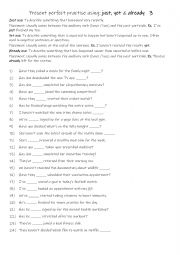
|
A2-B1 Present perfect practise using just, yet & already 3
Learning the present perfect tense with just, yet, and already is essential because these time adverbs allow students to express recent actions, expectations, and accomplishments clearly and concisely. Just helps highlight very recent actions (e.g., I have just finished my homework), making communication precise and current. Yet is vital for asking...
Level: elementary
Age: 9-100
Type:
Downloads: 123
|
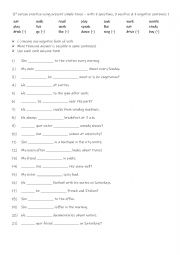
|
A1-A2 3rd person practise using present simple tense � with positive & negative sentences + questions 1
Students familiarise themselves with the 21 verbs. Then they read the sentences to see which question verb is required to complete the gap-fill. Each form is used 7 times! Answers on page 2.
Level: elementary
Age: 7-100
Type:
Downloads: 123
|
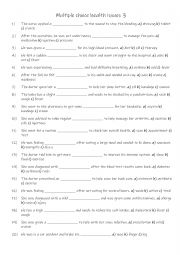
|
Multiple choice health issues 3
Students read the sentences and choose the correct word out of the given choices. Answers on page 2.
Level: intermediate
Age: 11-100
Type:
Downloads: 123
|
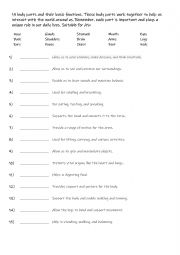
|
15 Body parts
15 body parts and their basic functions. These body parts work together to help us interact with the world around us. Students read the definition and select the correct missing word in bold.Suitable for A1+ Answers are on page 2
Level: elementary
Age: 10-100
Type:
Downloads: 122
|
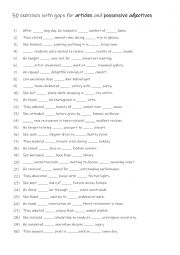
|
30 exercises with gaps for articles and possessive adjectives
Students read the sentences and work out what article ( a, an , the) is needed and what possessive adjective is needed according to the subject. Answers on page 2
Level: elementary
Age: 10-100
Type:
Downloads: 122
|
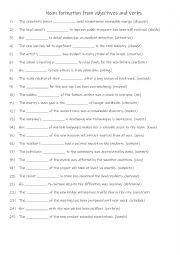
|
A2-B1 Noun formation from adjectives and verbs - 2
Learning noun formation from adjectives and verbs helps students develop a deeper understanding of word structures and enhances their vocabulary. Understanding how nouns are formed from adjectives and verbs helps students expand their vocabulary and use a wider range of words in their writing and speaking. It reinforces understanding of grammatical...
Level: intermediate
Age: 10-100
Type:
Downloads: 122
|
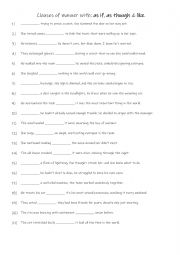
|
B1+-C1 Clauses of manner with: as if, as though & like.
Clauses of manner describe the way in which an action is performed. They often answer the question "how?" and are introduced by expressions like "as if," "as though," and "like."
"As if" and "as though" are typically used to describe a situation that is hypothetical or imagined. They can be followed by a verb in a past or present tense:
Past tens...
Level: advanced
Age: 12-100
Type:
Downloads: 122
|
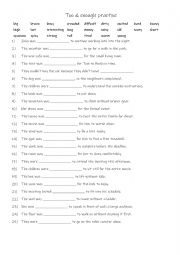
|
A2-B1 Too & enough practise
Understanding the correct use of "too" and "enough" enhances students ability to form more complex sentences and express nuances in meaning, which are key to advancing their English fluency. Students read the sentences and complete it with an adjective + too / enough. Answers on page 2.
Level: elementary
Age: 10-100
Type:
Downloads: 122
|
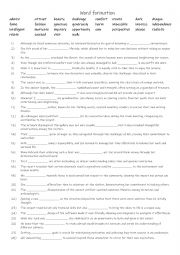
|
B1+-B2 Word formation 7 types of word formation!
Students need to familiarise themselves with all of the words in bold. Then they read the sentences to see which word in bold needs to complete the gap-fill. Then they change the word into the correct form. There are 7 types of word formation:Noun to Adjective, Verb to Adjective, Noun to Verb,Verb to Noun, Adjective to Noun, Adjective to Adverb & N...
Level: intermediate
Age: 10-100
Type:
Downloads: 122
|
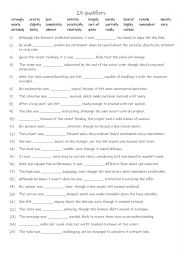
|
B1+-C1 25 Qualifiers
Learning qualifiers is essential for effective communication as they convey the degree or intensity of adjectives and adverbs, allowing for more nuanced expression. They enhance precision by clarifying how much or to what extent something is true, and they introduce subtlety in language by indicating uncertainty or partial agreement. Using a variet...
Level: intermediate
Age: 9-100
Type:
Downloads: 122
|












